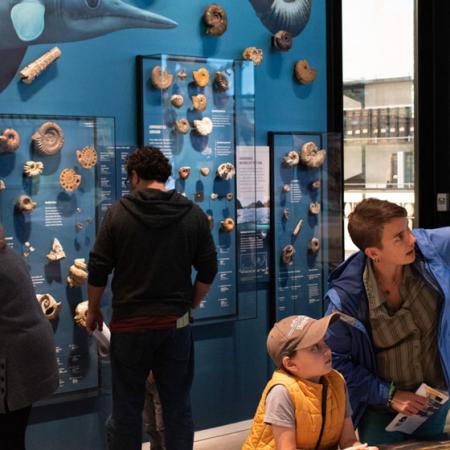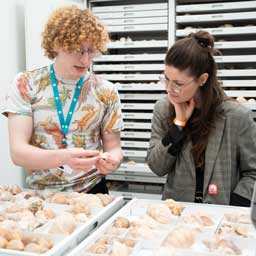Rock exposures are rare in the icy wastes of Antarctica, but they are the only places where finding fossils is possible. We used helicopters to fly from our base camp, the Central TransAntarctic Mountain (CTAM), on the Beardmore Glacier to the tops of mountains emerging from the surrounding ice in order to find and excavate fossils, sometimes camping out in the Antarctic weather for more than a week at a time.
What we found: Early Triassic
Our team, along with Dr. Roger Smith, a colleague from South Africa, recovered important fossils from the Early Triassic including multiple specimens of Lystrosaurus, a stout little animal with a flat face, tusks, and a beak that was a close relative of mammals. I hope that one of the Lystrosaurus skeletons will eventually be on display at the Burke.
Also from the Early Triassic, we brought back a little skeleton that is thought to belong to Prolacerta, a lizard-like creature that is a close relative of both crocodiles and dinosaurs.

Dr. Christian Sidor makes a snow wall to shelter his tent.

Brandon Peecook uses one of our diamond bladed rock saws to cut away rock surrounding a fossil. There’s nothing quite like cutting open a mountain with your hands!
What we found: Middle Triassic
From the Middle Triassic we discovered a good deal of material belonging to cynodonts and dicynodonts (both relatives of mammals) as well as the jaws from what may be a new species of huge narrow-snouted amphibian (the skull would be more than 32 inches long!).
Other findings: Jurassic
Both Huttenlocker and Peecook assisted other paleontologists in digging dinosaurs in the higher Jurassic elevations. They helped to excavate a section of the bizarre crested meat-eating dinosaur, Cryolophosaurus. They also helped excavate material belonging to large early plant eating dinosaurs (relatives of the later and more famous long-necked sauropods) and a previously unknown fleet-footed herbivorous dinosaur.
The 2010-2011 field season was an enormous success, with 40 specimens shipped back to Seattle for preparation and study at the Burke Museum.
---
Since this field work, we’ve published several papers on the Antarctica project:






